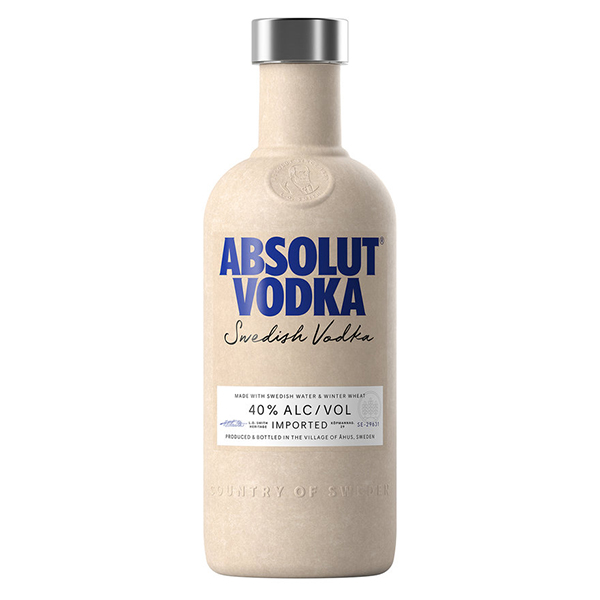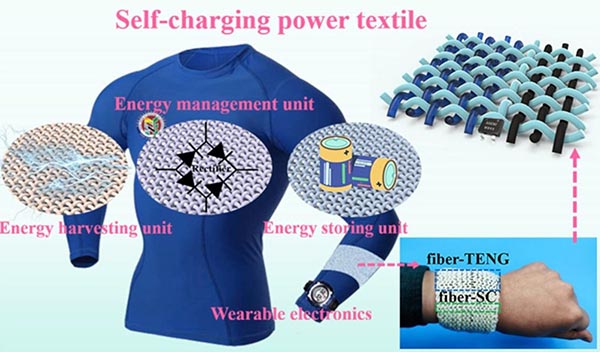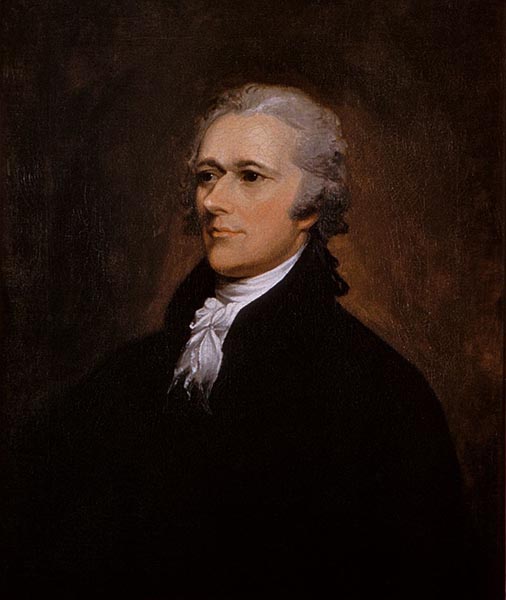Ledger Domain
If you remember the books of Charles Dickens, many characters worked in counting houses, basically the accounting departments of their day. In various film adaptations, you probably recall scenes of characters hunched over ledger books.
Indeed, back in the day, every company kept its accounts in ledger books, and they were all unique. They were, essentially, the QuickBooks (or Microsoft Excel) of their day. But how were ledger books printed? In one of his Tested videos, Adam Savage pays a visit to the American Bookbinders Museum in San Francisco and gets a history of the ledger press. Capillary action was the primary printing method.
This is pretty cool.
Keyboard Solos
Here’s a musical group we had not heard of until now: the Boston Typewriter Orchestra:
A collective endeavor which engages in rhythmic typewriter manipulation combined with elements of performance, comedy and satire. BTO aims to entertain the masses while providing an outlet for the creative urges of its members.
Via Boing Boing:
A recent article in The Boston Globe goes into a little more detail on the band’s history, which dates back to 2004, when one of the group’s founding members was using his typewriter at a bar. After a frustrated server asked him to please stop with all the banging, he sarcastically replied that he was busy conducting an invisible orchestra—and thus, an idea was born.
They were invited to perform on NPR’s Tiny Desk Concert. Check them out.
Absolutly Fabulous
Last week, we linked to a story about the coming of plastic wine and sparkling wine bottles. This week, via Core 77, Absolut is introducing paper-based bottles for their vodka. According to the company, the bottles are “100% bio-based” and “made from 57% paper with an integrated barrier of recyclable plastic.”
The bottles are made by Paboco, the paper bottle pioneer that also makes beer brand Carlsberg’s paper bottles. Paboco describes their bottles as being 85% paper, with the HDPE liner making up the other 15%. (We assume they’ve bumped the HDPE liner up to 43% for Absolut’s custom bottle to prevent the hooch from eating through it.)

Despite the plastic contents, Absolut claims that “Customers can simply recycle the packaging as paper through normal household waste.” It is not clear how this works.
Seems like a lateral move—glass is eminently recyclable, probably more so than the paper/plastic combo. (No mention of the “glass shortage” that was cited as the impetus for the switch to plastic wine bottles.) On the other hand, the company says the paper/plastic bottles are lighter, and more easily carried along to outdoor events like festivals.
Graphene Wears Well
Was it a good week for graphene news? It’s always a good week for graphene news! Another leap forward for graphene-based wearable textiles. From (who else?) Graphene-Info:
Researchers from Sichuan University, Chinese Academy of Sciences and Georgia Institute of Technology have developed a graphene-based wearable textile that can convert body movement into useable electricity and even store that energy. The fabric can potentially be used in a wide range of applications, from medical monitoring to assisting athletes and their coaches in tracking their performance, as well as smart displays on clothing.

As you can imagine, the limiting factor of electronic wearables is the flexibility and comfort of the electronic components, namely the battery. The number of locations on the body that such wearables can be placed is also fairly limited. But if the electronics could be integrated seamlessly (so to speak) into normal garments, it expands the types of applications that can be created and the data that can be captured and/or displayed. So:
The team of scientists produced what they call a ‘fiber-TENG’, a flexible, knittable, wearable structure that takes advantage of the triboelectric effect, in which certain materials become electrically charged after coming into frictional contact with another, different material. Commonplace static electricity for example involves the contact-induced electrification of tribolelectric effect.
The fiber-TENG consists of three layers: a polylactic acid layer (a type of polyester commonly used in 3D printing), a reduced graphene oxide layer (a highly affordable type of graphene), and a polypyrrole layer (a polymer already widely used in electronics and medicine).
When the fiber-TENG is subjected to mechanical deformation, such as bending or stretching by the person wearing a piece of clothing knitted from the textile, the triboelectric charges generated by the contact between the polylactic acid and reduced graphene oxide layers can be collected by the polypyrrole layer. This process generates an electrical output that can be used as a power generation unit.
Pink Flood
Do you have any plans to see the Barbie movie? No, nor do we. But apparently the production design of the movie used so much pink paint that one company’s global supply was exhausted. Says NPR:
“The world ran out of pink,” production designer Sarah Greenwood told Architectural Digest early last week.
She said construction of the expansive, rosy-hued Barbieland — at Warner Bros. Studios in Leavesden, England — had caused an international run on the fluorescent shade of Rosco paint.
Rosco is known for supplying the entertainment industry with products like scenic paints, color filters and other equipment, including certain tints specifically formulated for the screen.
Of course, thanks to “supply chain issues,” it had been in shortish supply to begin with.
Lauren Proud, Rosco’s vice president of global marketing, told the Los Angeles Times on Friday that “they used as much paint as we had” — but that it was in short supply to begin with during the movie's production in 2022.
The company was still dealing with pandemic-related supply chain issues and recovering from the 2021 Texas freeze that damaged crucial raw materials, she said.
Missing Link
Do you have a Maryland license plate on your car? If so, you may be unwittingly promoting a Philippine gambling site.
Via Car & Driver, it all started in 2012, when Maryland began commemorating the bicentennial of the War of 1812. Part of that commemoration was a series of license plates, issued between 2012 and 2016, that featured a URL that would send people to a web site that contained information about the war.
You can probably see what happened. After the commemoration of the war ended in 2015, they did not renew the domain and it was acquired by a new owner.
[The] new owner decided that online gambling was a better use of the domain name and adding useful information like the fact that “gambling is permitted in the Philippines” where “extremely lenient laws govern gaming.” The Washington Post noted that the 798,000 now-pro-gambling license plates are on about 15 percent of all registered vehicles in Maryland.
Drivers who’d rather not promote gambling on their cars don’t have a lot of easy options. Sure, they could order a new plate, but that costs money and time. Maryland does not allow drivers to use any sort of aftermarket plate cover that obscures “any of the characters of a vehicle's registration plate.” We're not sure if that applies to duct tape on top of a URL.
Of course, it’s probably a safe bet that most drivers are not going to be accessing a URL on the license plates of other cars.
Pain in the aaS
Last year, our Software section editor Jen Matt published an article “The Reality of SaaS & the Delusion of Software Ownership” insisting that you can’t buy software anymore. One commenter to the article wrote, “SaaS is a cancer that’s ruining every industry — even healthcare, ironically. It’s taking us back in time to feudalism and turning everyone into neo-serfs. We’re now little more than digital tenant farmers, and the tech oligarchs are the modern day ‘landlords.’”
A bit of metaphor abuse, but we see the point.
We were reminded of this after reading an article in Business Insider called “The Death of Ownership.”
As more devices in our lives run on software, manufacturers have started to exert more control over their products even after the customer has taken them home. In some cases, companies force customers to use their repair services, disabling the product if they try to fix it themselves. In other instances, corporations require people to pay for ongoing subscription to access basic features of the goods.
The most egregious example (so far) is automakers charging subscriptions to access features like heated seats and high beams.
Does their picture of a dystopian future sound out of the realm of possibility? We think not:
Imagine the start of a hypothetical summer Monday, some time in the future. You remotely start your coffee machine ($5 a month for the app to schedule brewing in advance and another $25 for recurring delivery of compatible pods) while you hit your stationary bike for a quick workout ($30 a month for access to classes). When you're ready to head into the office, the smart thermostatautomatically turns down the air-conditioning (a $10-a-month feature) as you use an app on your phone to remotely start your car (which costs you $20 a month). And if you want to get any of that fixed? Put away your screwdriver, because you'll have to go to the manufacturer for even a minor tune-up.
And don’t even think of trying to devise workarounds.
manufacturers use internet connectivity to monitor and control what you do. If they detect you did something they don’t like (maybe hot-wiring your heated seat), they can take away or disable other features. Tesla has been accused of revoking charge capacity,fast-charging compatibility, and other features remotely. Consumers are afraid to do anything that displeases manufacturers, knowing that they can be punished.
We would like to think that companies that don’t do these things might someday have a competitive advantage. We dream.
It’s LEGO’Clock
We know many people who have spent inordinate amounts of time building LEGO sets, but now one LEGO project could actually let you measure how much time you spend with LEGO. From Laughing Squid, The engineer behind Brick Technology, built a solar-powered mechanical LEGO clock—and it will keeps time for a billion years.
The clock has dials to display seconds, minutes, hours, days, weeks, months, years, decades, centuries, millennia, mega-annums and galactical years (time required for the Sun to orbit once around the centre of the Milky Way Galaxy).
Check out how they made it:
Sun Signs
As solar panels continue to proliferate—both residentially, commercially, and municipally—there is a potential eco-disaster looming on the horizon. And as bullish as we are on solar power, those sounding the alarm have a point: at some point, the current installed base of solar panels will need to be replaced, creating a potential tsunami of discarded panels. Says the BBC:
While they are being promoted around the world as a crucial weapon in reducing carbon emissions, solar panels have an average lifespan of 25-30 years.
Experts say billions of panels will eventually all need to be disposed of and replaced.
“The world has installed more than one terawatt of solar capacity. Ordinary solar panels have a capacity of about 400W, so if you count both rooftops and solar farms, there could be as many as 2.5 billion solar panels,” says Dr Rong Deng, an expert in solar panel recycling at the University of New South Wales in Australia.
The problem is that the recycling infrastructure for solar panels simply does not yet exist. And for good reason: it hasn’t really been needed. Yet. But the need is starting to emerge.
Energy experts are calling for urgent government action to prevent a looming global environmental disaster.
Good luck with that. But there is some good news. At the end of this month, world’s first factory dedicated to fully recycling solar panels opens in France.
ROSI, the specialist solar recycling company which owns the facility, in the Alpine city of Grenoble, hopes eventually to be able to extract and re-use 99% of a unit's components.
As well as recycling the glass fronts and aluminium frames, the new factory can recover nearly all of the precious materials contained within the panels, such as silver and copper, which are typically some of the hardest materials to extract.
These rare materials can subsequently be recycled and reused to make new, more powerful, solar units.
As the need arises, we are relatively hopeful that solar panel recycling will scale up before solar cell waste goes supernova.
AI-Yi-Yi, Part the Infinity: Making the Problem Worse
Oh, come on. From Vice: “Eating Disorder Helpline Disables Chatbot for ‘Harmful’ Responses After Firing Human Staff.”
The National Eating Disorder Association (NEDA) has taken its chatbot called Tessa offline, two days before it was set to replace human associates who ran the organization’s hotline.
The humans decided to unionize, so the association decided to replace them with Tessa, a chatbot. What could possibly go wrong?
“It came to our attention last night that the current version of the Tessa Chatbot, running the Body Positive program, may have given information that was harmful and unrelated to the program,” NEDA said in an Instagram post.
… On Monday, an activist named Sharon Maxwell posted on Instagram, sharing a review of her experience with Tessa. She said that Tessa encouraged intentional weight loss, recommending that Maxwell lose 1-2 pounds per week. Tessa also told her to count her calories, work towards a 500-1000 calorie deficit per day, measure and weigh herself weekly, and restrict her diet. “Every single thing Tessa suggested were things that led to the development of my eating disorder,” Maxwell wrote. “This robot causes harm.”
Awesome.
Fine Whine
How good are you at judging wine? Probably just about as good as anyone. Or, in other words, there’s no real science to it. For example, via The Guardian:
Every year Robert Hodgson selects the finest wines from his small California winery and puts them into competitions around the state.
And in most years, the results are surprisingly inconsistent: some whites rated as gold medallists in one contest do badly in another. Reds adored by some panels are dismissed by others. Over the decades Hodgson, a softly spoken retired oceanographer, became curious. Judging wines is by its nature subjective, but the awards appeared to be handed out at random.
Hodgson has a background in statistics, so he proposed an experiment to the organizers of the California State Fair wine competition.
Each panel of four judges would be presented with their usual “flight” of samples to sniff, sip and slurp. But some wines would be presented to the panel three times, poured from the same bottle each time. The results would be compiled and analysed to see whether wine testing really is scientific.
The first experiment was conducted in 2005, and the most recent this year. Hodgson’s results have shocked the wine industry, and over the years he has found that professional wine-tasters are not very good at judging wine.
“The results are disturbing,” says Hodgson from the Fieldbrook Winery in Humboldt County, described by its owner as a rural paradise. “Only about 10% of judges are consistent and those judges who were consistent one year were ordinary the next year.
“Chance has a great deal to do with the awards that wines win.”
… Results from the first four years of the experiment, published in the Journal of Wine Economics, showed a typical judge’s scores varied by plus or minus four points over the three blind tastings. A wine deemed to be a good 90 would be rated as an acceptable 86 by the same judge minutes later and then an excellent 94.
Part of the problem is that, even if a judge does have a more sophisticated palate, being confronted by 100 different wines and being able to objectively evaluate each one is just beyond human ability. And at the same time, wine is a complex substance. And there are other aspects that can color one’s judgement, such as how a wine is described, its price, even its color.
So, it’s coming up on Happy Hour, so we’ll let you know how our own wine judging goes…
Cheez It!
And of course what goes with wine? Cheese!
Do you enjoy taking in the wonders of nature, and basking in fresh air among natural attractions that have existed for millions of years? And do you like Cheez-Its? OK, that’s a bit of a non-sequitur, but then so is this. From Food & Wine:
Visitors to the Joshua Tree, California area are truly spoiled for choice when it comes to jaw-dropping natural attractions. There’s Joshua Tree National Park, the Mojave Trails National Monument, and the Mojave National Preserve — and now Cheez-It has added its own must-see spot to the local landscape.
Say what? Yes, a temporary pop-up shop will let you satiate all your processed cheese desires.

Katie Gardner Photography
The Cheez-It Stop has been equipped with the world’s first (and so far, its only) Cheez-It Pump which will spray bags of Cheez-Its through your open car window. And best of all, it’s completely free to take advantage of the pump and feed your Cheez-It cravings.
Yes, the Cheez-It Stop also has merch for sale, including what the company describes as “absurdly cheesy mementos” and “nostalgic Cheez-It Stop collectibles,” other cheese-related items, and a wide variety of other Cheez-It flavors, including some that are aren’t always easy to find on your local supermarket’s shelves. (Although filling up from the Cheez-It Pump is free, you will have to buy any other souvenirs that you’d like to take home.)
…It can be found at 61943 Twentynine Palms Highway, Joshua Tree, California and will be open between 10 a.m. and 6 p.m. PT every day between now and Sunday. If you’re planning a trip this week, it’s a 128-mile drive from Los Angeles, 168 miles from San Diego, or an easy 40 miles from the Palm Springs Airport.
Act fast: it disappears after June 11.
Did anything catch your eye “around the Web” this week? Let us know at [email protected].
This Week in Printing, Publishing, and Media History
June 5
1851: Harriet Beecher Stowe's anti-slavery serial, Uncle Tom's Cabin, or Life Among the Lowly, starts a ten-month run in the National Era abolitionist newspaper.
1910: American short story writer O. Henry dies (b. 1862).
1919: American-Swiss author and illustrator Richard Scarry born.
1947: American singer-songwriter and violinist Laurie Anderson born.
1956: Elvis Presley introduces his new single, “Hound Dog,” on The Milton Berle Show, scandalizing the audience with his suggestive hip movements.
2012: American science fiction writer and screenwriter Ray Bradbury dies (b. 1920).
June 6
1756: American soldier and painter John Trumbull born.

Portrait of Alexander Hamilton by John Trumbull, 1806.
1799: Russian author and poet Alexander Pushkin born.
1875: German author, critic, and Nobel Prize laureate Thomas Mann born.
1892: The Chicago “L” elevated rail system begins operation.
1933: The first drive-in theater opens in Camden, N.J.
1946: American bass player and songwriter Tony Levin born.
2016: English playwright and screenwriter; works included Equus and Amadeus Peter Shaffer dies (b. 1926).
June 7
1810: The newspaper Gazeta de Buenos Ayres is first published in Argentina.
1848: French painter and sculptor Paul Gauguin born.
1911: American engineer and designer Brooks Stevens born, most famous for designing the Wienermobile.
1955: Lux Radio Theatre signs off the air permanently. The show launched in New York in 1934, and featured radio adaptations of Broadway shows and popular films.
1958: American singer-songwriter, multi-instrumentalist, producer, and actor Prince (né Prince Rogers Nelson) born.
1970: English novelist, short story writer, essayist E. M. Forster dies (b. 1879).
1971: The United States Supreme Court overturns the conviction of Paul Cohen for disturbing the peace, setting the precedent that vulgar writing is protected under the First Amendment to the United States Constitution.
1975: Sony introduces the Betamax videocassette recorder. Alas, the “videotape war” of the late 70s and early 80s would result in VHS becoming the dominant format...for a while.
June 8
1809: English-American theorist and author Thomas Paine dies (b. 1737).
1867: American architect Frank Lloyd Wright born.
1887: Herman Hollerith applies for US patent #395,781 for the “Art of Compiling Statistics,” which was his punched card calculator.
1912: Carl Laemmle incorporates Universal Pictures.
1949: George Orwell's Nineteen Eighty-Four is published, initially as fiction...for a while
1916: English biologist, biophysicist, neuroscientist, and Nobel Prize laureate Francis Crick is born.
June 9
1523: The Parisian Faculty of Theology fines Simon de Colines for publishing the Biblical commentary Commentarii initiatorii in quatuor Evangelia by Jacques Lefèvre d’Étaples.
1870: English novelist and critic Charles Dickens dies (b. 1812).
1891: American composer and songwriter Cole Porter born.
1930: A Chicago Tribune reporter, Jake Lingle, is killed during rush hour at the Illinois Central train station by Leo Vincent Brothers, allegedly over a $100,000 gambling debt owed to Al Capone.
1934: Donald Duck makes his debut in The Wise Little Hen.
1961: American screenwriter, producer, and playwright Aaron Sorkin born, and walking and talking in no time.
1973: Secretariat wins the U.S. Triple Crown.
June 10
1793: The Jardin des Plantes museum opens in Paris. A year later, it becomes the first public zoo.
June 11
1572: English poet, playwright, and critic Ben Jonson born.
1892: The Limelight Department, one of the world’s first film studios, is officially established in Melbourne, Australia.
1910: French biologist, author, inventor, and co-developer of the aqua-lung Jacques Cousteau born.
1935: Edwin Armstrong gives the first public demonstration of FM broadcasting in the United States.
1936: The London International Surrealist Exhibition opens.
1998: Compaq Computer pays US$9 billion for Digital Equipment Corporation in the largest high-tech acquisition.
2002: Antonio Meucci is acknowledged as the first inventor of the telephone by the United States Congress.













